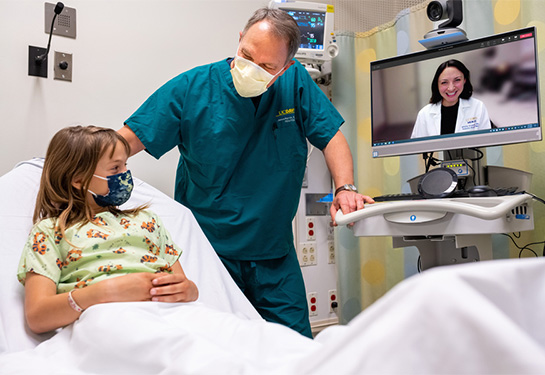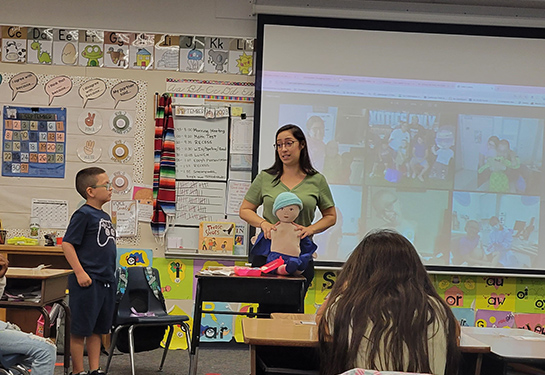Telehealth visits can expand access to pediatric physiatry care
New study finds high quality of care, parent satisfaction in hybrid appointments for children
Pediatric physiatrists — doctors that treat conditions of the bones, muscles, joints, brain and nervous system — are in short supply in California’s rural communities.
Also known as PM&R specialists, short for Physical Medicine and Rehabilitation, their role is important: They oversee physical and occupational rehabilitation therapies, recommend medical equipment and identify children who may need surgical interventions.
But the shortage presents a barrier to care when insurance companies refuse to pay for the time needed for physiatrists to travel to remote areas, which in California can be 100 miles or more from the physiatrist’s original location.
A new study and report from UC Davis Health researchers, published by the journal Academic Pediatrics, explores telehealth appointments as an alternative to in-person physiatrist visits. The study specifically looked at the effectiveness of telehealth for children with cerebral palsy from the California Children’s Services Medical Therapy Program. The program is a network of multidisciplinary school-based care clinics that provide comprehensive medical care to nearly 23,000 children with special health care needs.
The study evaluated three models of care:
- Traditional, in-person physiatrist visits
- Hybrid visits, where physiatrists led the exam remotely, while an in-person physical therapist conducted the physical exam
- Virtual visits, where parents performed the physical exam under the direction of providers such as physical therapists and physiatrists who observed remotely on a digital screen
The study concluded that hybrid visits may provide a viable option to stretch the finite resources of physiatry in the state and rural areas throughout the country by providing a cost-effective and patient-centered model of care as an alternative to in-person care.
“In rural communities, the likelihood that [these kids] are going to see a pediatric rehabilitation doctor, a physiatrist, is based upon the distance that they live from a special care center or tertiary care medical center,” said Loren T. Davidson, a clinical sciences professor and physician at UC Davis Health and one of the study researchers. “Too often, rural families of children with special physical needs must choose between traveling long distances to seek care or forgoing care.”
Hybrid exams are viable alternatives to in-person physiatry exams
Researchers found no differences between the experience for parents and their satisfaction with the quality of care across the three different care models.
The physiatrists and therapists, meanwhile, preferred the in-person and hybrid models of care. They also rated confidence in quality of care and parent education lower for the all-virtual model of care compared with the other two care models. However, physiatrists and therapists were equally satisfied with the quality of care for both the in-person and hybrid visits. They also estimated that the hybrid appointments would save $100 per visit, on average, by reducing travel costs for physiatrists.
“This study demonstrated that a hybrid model of care could be used to expand access to pediatric physiatry care in California and, potentially, around the nation,” said Sarah Haynes, UC Davis Health epidemiologist and the study’s first author. “These findings are important and relevant for regions where few pediatric physiatrists serve geographically large areas and access to specialty care may be limited.”
Other co-authors were Dan Tancredi, Robert Burns, Siedah Garrison, and James Marcin, of UC Davis Health.




